|
94. Vanessa cardui (Linnaeus, 1758) / Painted lady / Nymphalidae – Nymphalinae
NL: distelvlinder, distelvink / D: Distelfalter / F: belle-dame
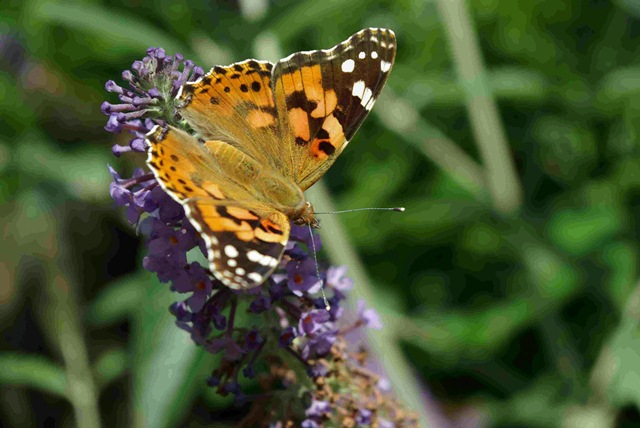 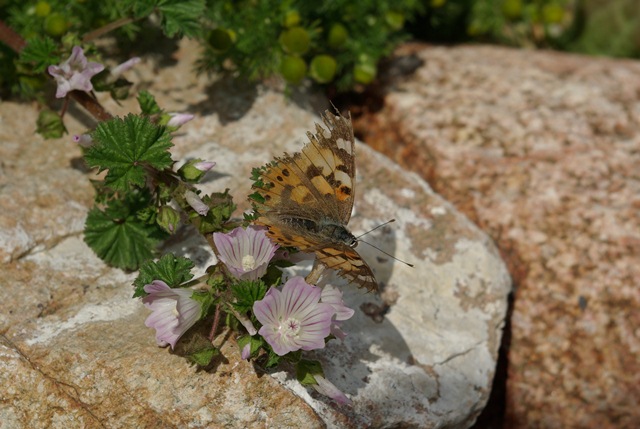 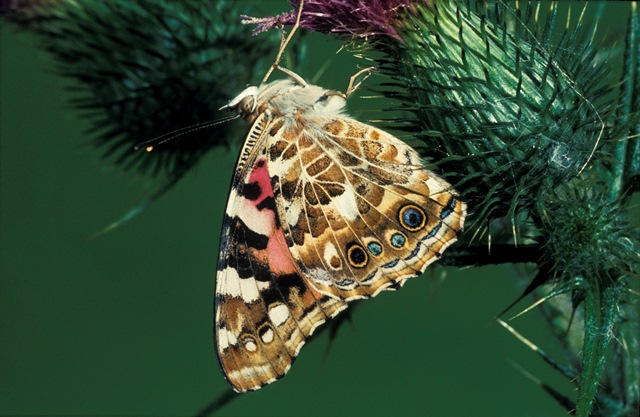
Photographs: Frits Bink ©.
Large, wing length 28 (26-30) mm. Recorded from all countries in the Benelux and considered as an irregularly migrant of which their larvae are found on places in an open landscape with short vegetation. Occurs nearly all over the world in tropical and sub-tropical climate and in summer also in temperate climate regions.
Butterfly is seen on the wing from mid-May until end-September, peaks early-June and early-August. The species occurs the whole year round in Mediterranean climate, amplitude 4 to 9. Required heat sum for one generation in temperate climate 700°d, corresponding climate windows 22-30 weeks. The maximum tolerated heat sum is about 4000°d, tropical condition.
The butterfly is able to migrate over thousands of kilometres and sometimes reaches Iceland. The species is helped by human land use because it prefers open landscape and can use many agriculture weeds as host-plants. In many cases it is a typical species of large pastures where thistles or mallows grow. The arrival in spring of migrants in the temperate climate region is often easy to correlate with weather conditions in wintertime in the Mediterranean region and air mass circulation in spring.
Ecological characteristics
Behaviour over time
Overwintering: larval stages in Mediterranean region.
Reproduction: oviposition starts after 7-18 days when the body contains 94 (79-106) eggs, repeated phase of egg development after migrating may occur, estimated potential reproduction about 5 times as much.
Larval feeding periods: in summer 3-4 weeks, in winter 5-6 weeks.
Generations: in temperate climate zone one, sometimes two, many in the warm regions.
Spreading of risk: the high migratory activity and long life span of the adult are the traits to make the species a super nomad that survives all kinds of unsuitable conditions.
Life cycle: egg 6 (3-7) days; larva in summer 28 (20-34) days; pupa 15 (9-18) days.
Life span of adult: very long, up to 9 weeks.
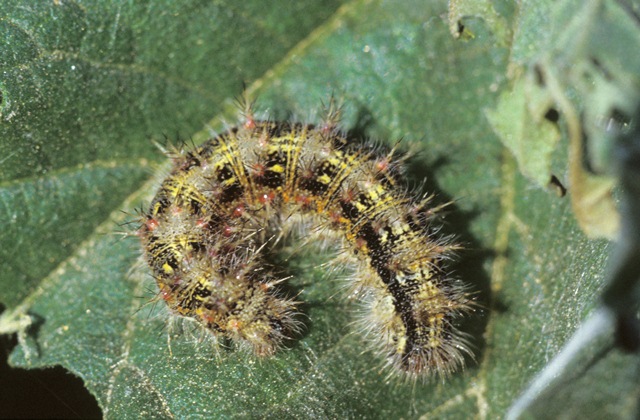 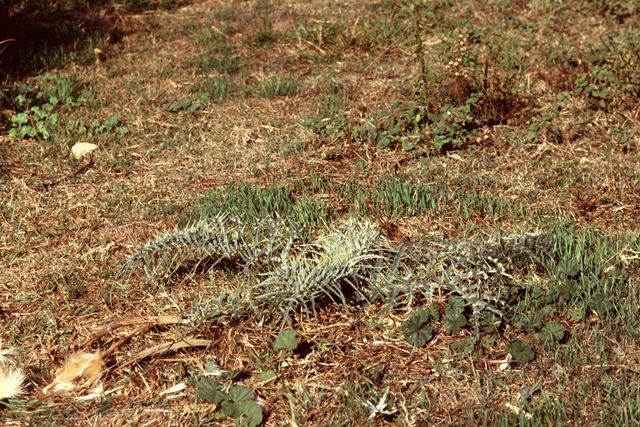
Photographs: Frits Bink ©.
Behaviour in space
From stay-at-home to migrant: vagrant, unpredictable in appearance.
Finding a mate: male patrols and sometimes perches.
Orientation in the landscape: open landscape with short vegetation.
Oviposition: individually laid on the upper side of young leaf.
Defence
Threats from other organisms: larva is armoured with spines and lives hidden in a web.
Threats from the environment: cold and rainy weather.
Feeding habits
Adult: nectar, all kind of flowers, composites and knapweed in summer, Eucalyptus, Lantana in winter.
Larva: lives hidden in its nest of leaves spun together.
Larval foodplants
Plant species: in temperate region Asteraceae, Antennaria, Arctium, Artemisia, Aster, Carduus, Cirsium, Echinops, Onopordum, Malvaceae, Malva neglecta, M. sylvestris, Urticaceae, Urtica dioica.
Journal
Rearing experiments:
1. Based on specimen from the Grebbeberg, Netherlands:
13 July 1983: egg laying female captured.
19 July: eggs hatched.
4 August: biggest larvae in fifth instar, nearly fully grown.
7 August: first pupa.
9 August: seven pupae and one larva.
19 August: first adult butterfly appeared.
2. Based on specimens from Quarteira, Portugal:
19 November 1985: fully grown larvae collected.
24 November: first pupa.
30 November: last larva pupated.
5 December: first adult appeared.
Table 94-1. Results of dissections. Estimated egg production after load per ovariole 1.0 - .05 / .03 - .005.

Table 94-2. Collection and observation localities
D, Kaiserstuhl, Badberg, 433 m, 48° 05’ 47”N – 7° 40’ 40”E; 9 July 1985.
D, Kaub, 50° 05’ 36”N – 7° 45’ 43”E; 26 May 1986.
F, Cap Blanc-Nez, 30 m, 50° 55’ 37”N – 1° 42’ 45”E; 10 June 2000.
F, Brittany, Telgruc-sur- Mer, 48° 12’ 25”N – 4° 22’ 25”W; 29 September 2004.
F, Normandy, Havre de Surville, 49° 16’ 47”N – 1° 40’ 23”W; 19 September 2005.
F, Lorraine, Jaulny, 209 m, 48° 57’ 55”N – 5° 52’ 52”E; 8 July 2006.
F, Lorraine, Rupt devant Saint-Mihiel, 280 m, 48° 53’ 01”N – 5° 24’ 10”E; 28 June 2006.
F, Pagny-la-Blanche-Côte, 308 m, 48° 32’ 37”N – 5° 42’ 58’E; 10 July 1985, 5 July 2006.
NL, Grebbeberg, 51° 57’ 09”N – 5° 36’ 23”E; 13 July 1983.
NL, Kortgene, 51° 34’N – 3° 48’E; 20 September 2003.
P, Quarteira, 37° 04’ 48”N – 8° 08’ 46”W; 10 November 1985 (larvae).
P, Quarteire, 37° 03’ 45”N – 8° 04’ 20”W; 21 November 1985 (larvae and adults).
S, Gotland, Irevik, 57° 50’N – 18° 38’E; 25 June 1991 (arrival of female migrant with empty abdomen).
Fig. 94-1. Vanessa cardui, phenogram adapted from Bos et al. 2006: 258.
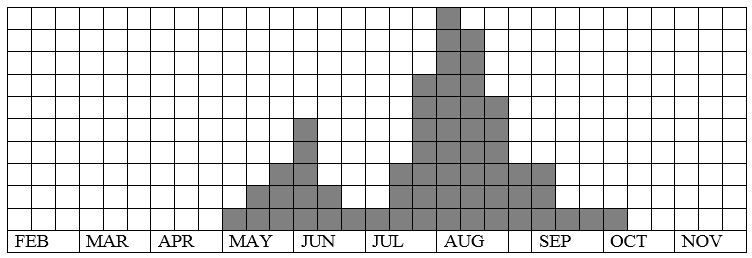
Fig. 94-2. Vanessa cardui, habitat characteristics.
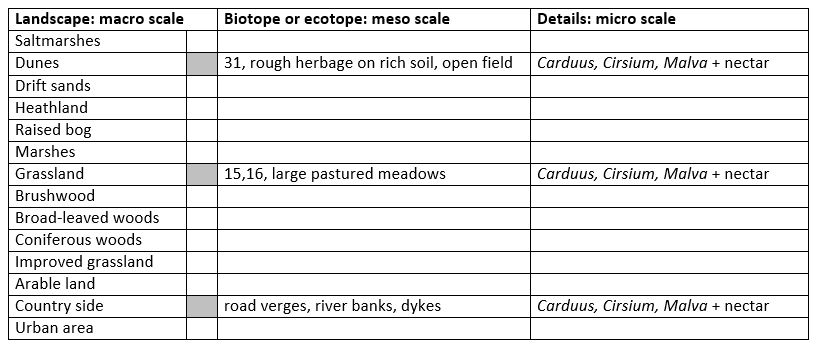
Fig. 94-3. Vanessa cardui, climate matrix, heat-sums: sSummer season suitable for at least 1 generation, > 700°d (light part), zone with continuous generations 1500-5000°d, jan +10ºC (dark part).
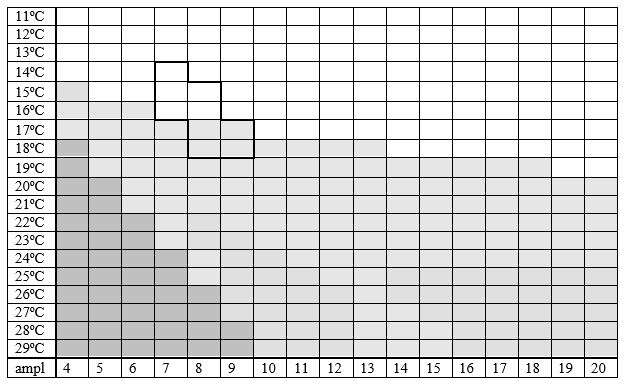
|










